What you should know about the “Carta Porte” or Bill of Lading
Among all the paperwork required to transport goods between Canada, the United States, and Mexico, one crucial document is the Bill of Lading, which would be the equivalent of the document that in Mexico is called “Carta Porte”. The Bill of Lading is also commonly called Bol. In this post, you will find important information about this essential document for the transport of goods. We also provide you with samples of a Bill of Lading and a Carta Porte.
Introduction
The Bill of Lading plays an essential role in the transportation of goods. It is present in all stages of the transport process: from the preparation of the shipment before beginning the transportation, passing through the transportation of the merchandise, until the delivery of the goods at the final destination and the post-transportation payments.
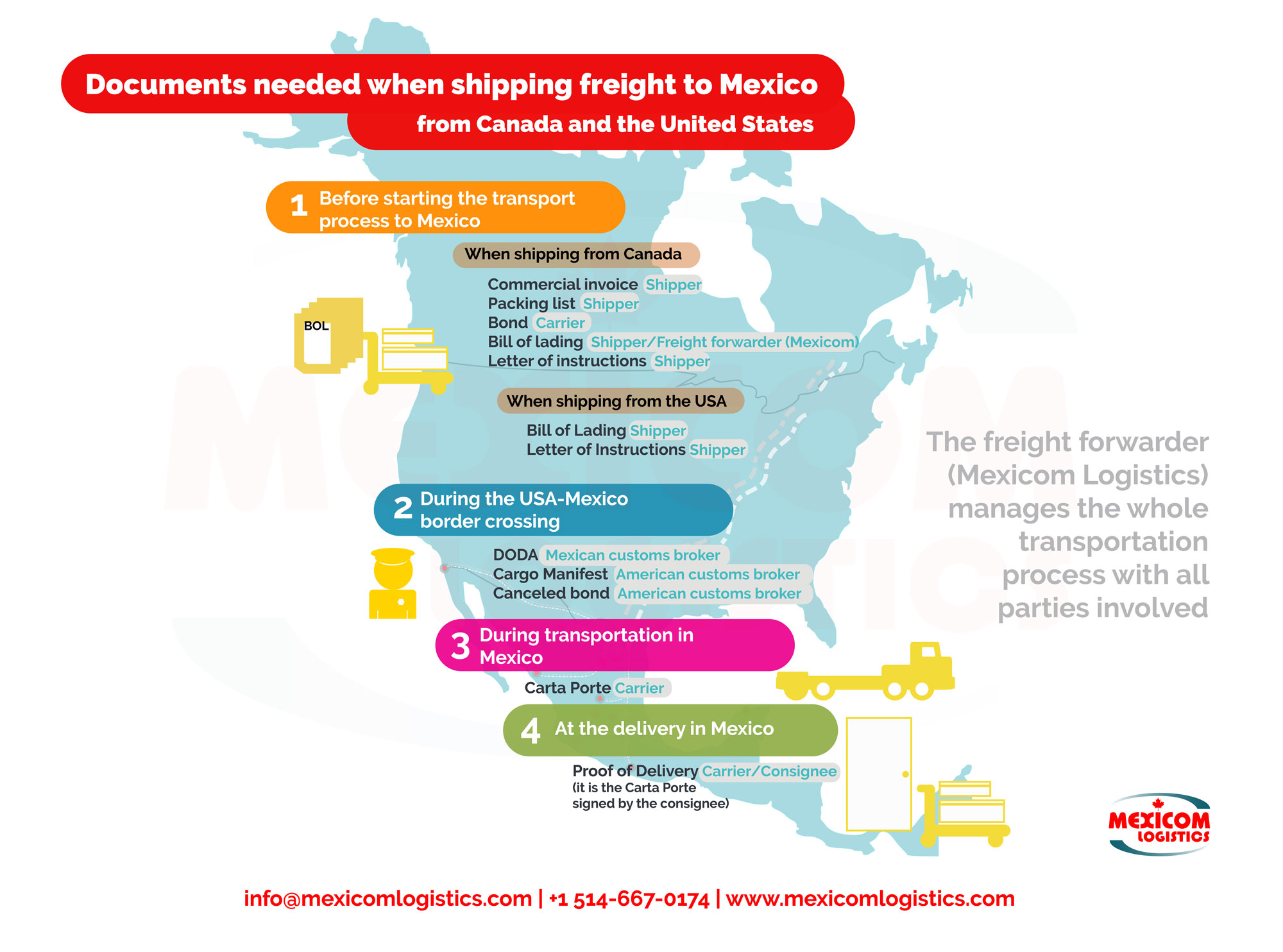
It may interest you reading: The ultimate guide for shipping freight to Mexico from Canada and the US
What is the Bill of Lading?
In simple terms, the Bil of Lading is the legal name of the contract between the carrier and the consignee or the user who contracts the freight service. The Bill of Lading contains the terms of the agreement and the details of the merchandise that is being transported.
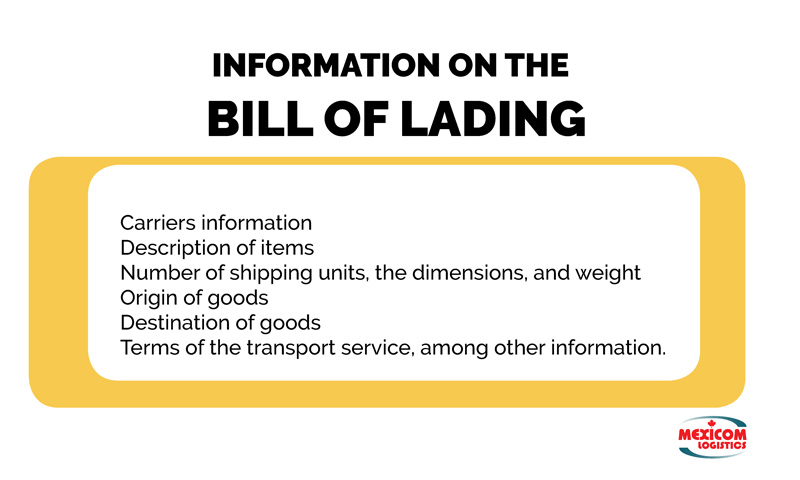
Who issues the Bill of Lading and what information does it contain?
Carriers are responsible for issuing a Boll of lading for each shipment, which must include:
- Carriers information
- Description of items
- Number of shipping units, the dimensions, and weight
- Origin of goods
- Destination of goods
- Terms of the transport service, among other information.
What is the Bill of Lading for?
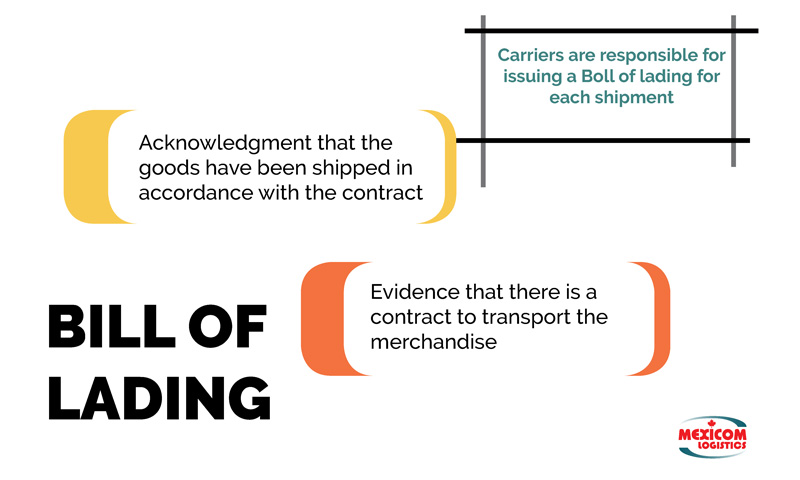
The Bill of Lading has different functions, among them, the most usual are:
Acknowledgment that the goods have been shipped in accordance with the contract
The Bill of Lading becomes the Proof of delivery or “Pueba de entrega” when it is signed by the consignee upon receiving the merchandise. The Proof of delivery, as the name implies, proofs that the cargo was shipped and delivered. If the cargo is damaged or parts are missing at the time of delivery, the consignee must mention it in the Proof of delivery.
Evidence that there is a contract to transport the merchandise
The Bill of Lading contains the conditions of transport and the relationship between the carrier and either the consignee or the user of the service. It also includes the obligations of the carrier. Through the Bill of Lading, it is possible to know exactly what kind of woods the transport service was contracted for and what the conditions were.
Samples of a real life Bill of lading and Carta Porte
Carta Porte sample
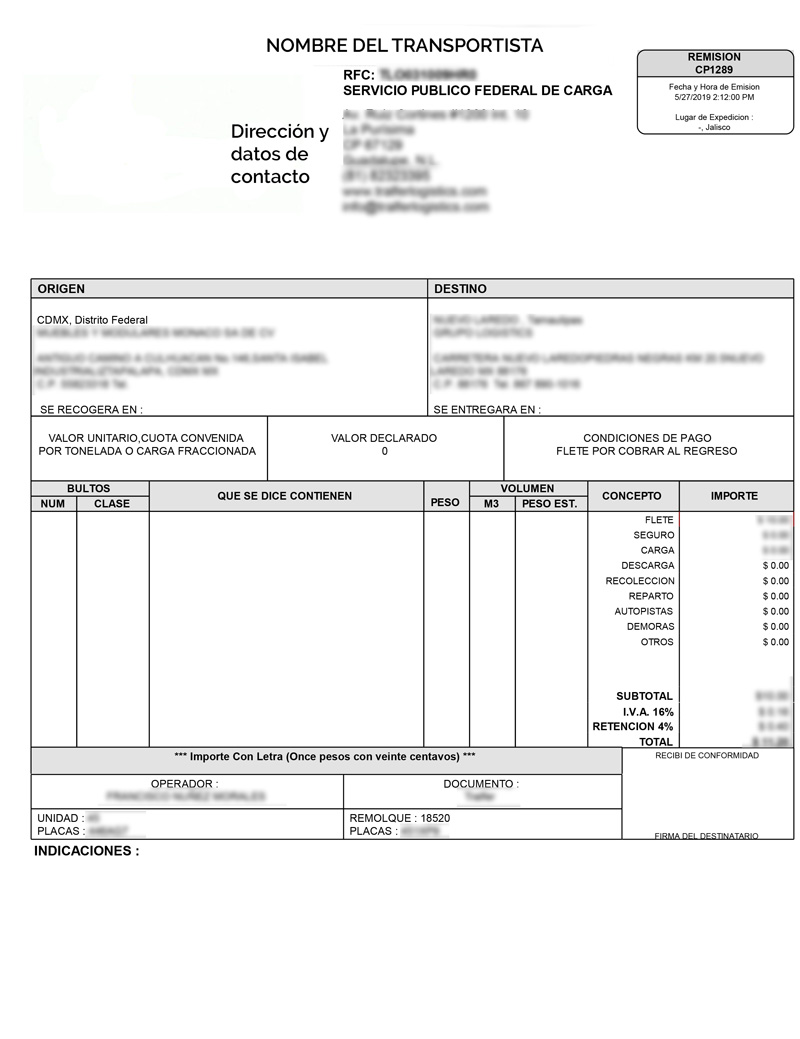
Bill of lading Sample

Fuentes









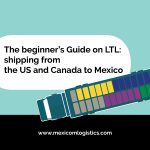
I really like looking through an article that will make people think.
Also, thank you for permitting me too comment!